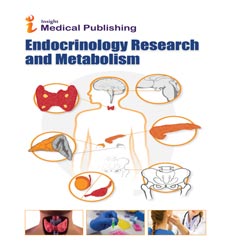Abstract
Clinical and Genetic Diagnosis of Pheochromocytoma and Paraganglioma
Background: Pheochromocytomas are rare tumors of the adrenal medulla and extra-adrenal sympathetic chromaffin tissues. This study investigates the clinical and genetic features of pheochromocytoma. Methods: We analyzed records of 167 patients diagnosed with pheochromocytomas. Patients were divided into three groups, as follows: group 1 – patients with multiple endocrine neoplasia type 2; group 2 – patients with von Hippel-Lindau Syndrome; group 3 – patients with sporadic pheochromocytoma. Findings: The average age at the time of initial diagnosis was 25 years in group 1, 18 years in group 2 and 47 years in group 3. The predominant secretion of epinephrine was associated with the multiple endocrine neoplasia type 2, the predominant secretion of norepinephrine was associated with von Hippel-Lindau syndrome and the mixed secretion was associated with sporadic pheochromocytoma. There was a positive relationship between the tumor sizes and excretion of methylated metanephrines in group 1. All tumors of this group were localized in adrenals (82% of pheochromocytomas were bilateral and 58% of pheochromocytomas were multifocal). In group 2 16.4% of patients had extraadrenal tumor localization, at 6.6% of patients had metastases. In groups 1 and 3 no metastases were found. Conclusion: These data suggest that genetic testing should be recommended in patients younger than 40 years, in patients with bilateral and multifocal tumors and in patients with family history of pheochromocytoma. The predominant production of norepinephrine makes the diagnosis of multiple endocrine neoplasia type 2 unlikely. In patients with multiple endocrine neoplasia type 2 and the predominant production of epinephrine the search for the metastases and extra-adrenal tumor localization is inappropriate.
Author(s): Nurana Nuralieva
Abstract | Full-Text | PDF
Share This Article
Open Access Journals
- Aquaculture & Veterinary Science
- Chemistry & Chemical Sciences
- Clinical Sciences
- Engineering
- General Science
- Genetics & Molecular Biology
- Health Care & Nursing
- Immunology & Microbiology
- Materials Science
- Mathematics & Physics
- Medical Sciences
- Neurology & Psychiatry
- Oncology & Cancer Science
- Pharmaceutical Sciences
